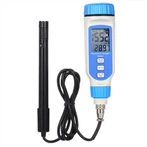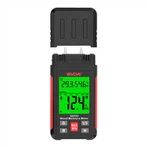Introduction and Explanation of the Resolution of a Digital Multimeter
Resolution refers to the quality of a meter's measurement results. By understanding the resolution of a table, you can determine whether you can see small changes in the measured signal. For example, if the resolution of a digital multimeter in the 4V range is 1mV, then when measuring a 1V signal, you can see a small change of 1mV (1/1000 volt).
If you want to measure lengths less than 1/4 inch (or 1 millimeter), you definitely won't use a ruler with small units in inches (or centimeters). If the temperature is 98.6 ° F, measuring with a thermometer marked only with integers is useless. You need a thermometer with a resolution of 0.1 ° F.
The number of digits and characters are used to describe the resolution of a table. Digital multimeters are classified based on the number of digits and words they can display.
A three and a half digit table that can display three full digits from 0 to 9, and one and a half digits (only displaying 1 or not displaying). A 3.5-bit digital table can achieve a resolution of 1999 words. A 4-bit digital table can achieve a resolution of 19999 words.
Describing the resolution of a numerical table using words is better than using bits, and the resolution of a 3.5-bit numerical table has been increased to 3200 or 4000 words.
Digital meters provide better resolution for certain measurements. For example, a 1999 word meter cannot display 0.1V when measuring voltages greater than 200V. However, a 3200 word digital meter can still display 0.1V when measuring voltages of 320 volts. When the measured voltage is higher than 320V and a resolution of 0.1V is required, a more expensive 20000 word digital meter is needed.





